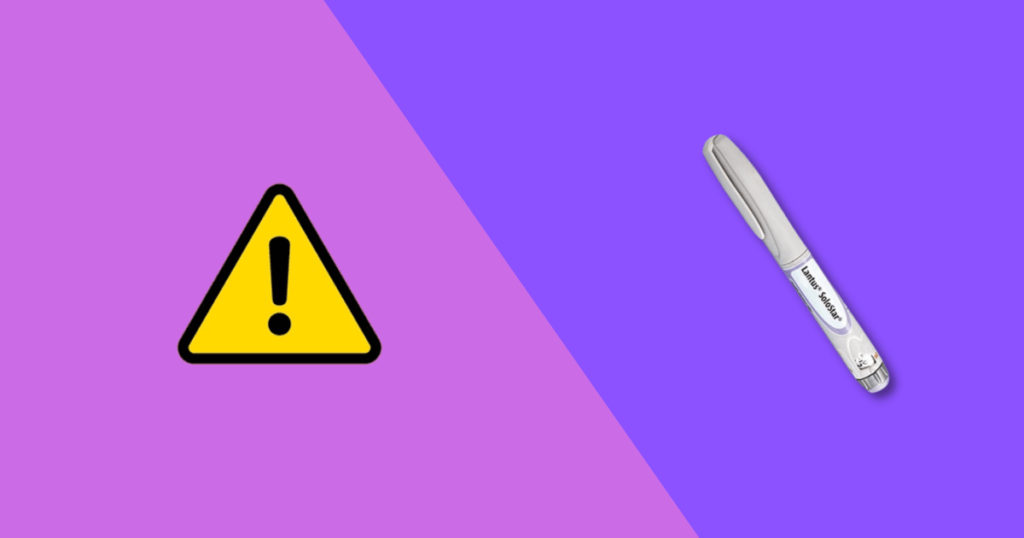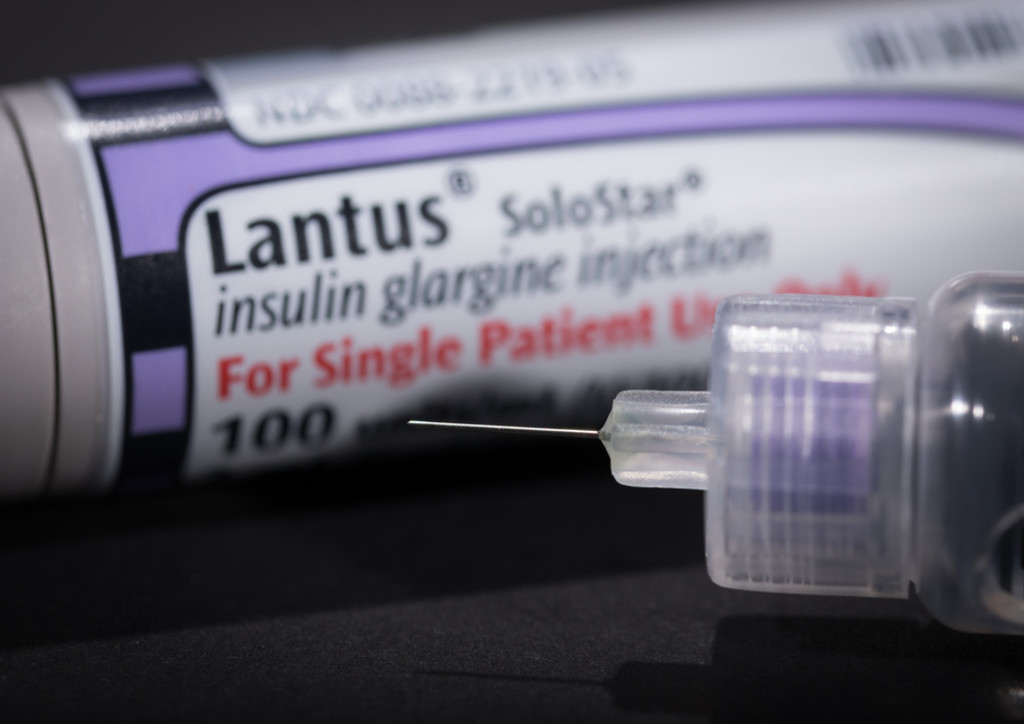Living with diabetes requires careful management of blood glucose levels, and for many individuals, this involves the use of medications like Lantus. Lantus is a long-acting insulin analog that plays a crucial role in controlling blood sugar levels in people with diabetes. In this comprehensive guide, we will delve into the details of Lantus Diabetes Medication, exploring its mechanism of action, usage, potential side effects, and how it fits into the broader landscape of diabetes management.
Contents
What is Lantus?
Lantus is a brand name for insulin glargine, a type of long-acting insulin. Manufactured by Sanofi-Aventis, Lantus is designed to provide a steady release of insulin over an extended period, helping to maintain more stable blood glucose levels throughout the day and night. Unlike short-acting insulins that are taken with meals to cover immediate rises in blood sugar, Lantus is typically administered once a day to provide a baseline level of insulin.
Lantus is just one component of a comprehensive diabetes management plan. Lifestyle modifications, including a balanced diet, regular physical activity, and other medications, may also be part of the overall strategy. Blood glucose monitoring is essential to adjust insulin dosages and maintain optimal control.
Mechanism of Action of Lantus (Diabetes Medication)

Insulin Basics: Before delving into Lantus specifically, it’s essential to understand the role of insulin in the body. Insulin is a hormone produced by the pancreas, an organ located behind the stomach. Its primary function is to regulate blood sugar (glucose) by facilitating the uptake of glucose into cells, where it can be used for energy.
Lantus as a Long-Acting Insulin: Lantus belongs to the class of long-acting insulins, and its active ingredient is insulin glargine. Long-acting insulins are designed to provide a continuous, baseline level of insulin throughout the day and night. This is in contrast to short-acting insulins, which are taken with meals to address the immediate rise in blood sugar that occurs after eating.
Microprecipitation and Sustained Release: The key to Lantus’ mechanism of action lies in its unique formulation. When Lantus is injected under the skin, insulin glargine molecules form microprecipitates. These are small particles that allow for the slow and sustained release of insulin into the bloodstream over an extended period.
This sustained release serves to mimic the body’s natural insulin secretion. In individuals without diabetes, the pancreas releases a steady low level of insulin between meals to keep blood sugar in check. Lantus aims to replicate this basal insulin activity, providing a constant background level of insulin that helps manage blood glucose levels when the body is not actively processing food.
Types of Lantus (Diabetes Medication)
Lantus is available in various forms to suit the preferences and needs of individuals with diabetes. The two main types are Lantus and Lantus Solostar:
Lantus:
- Formulation: Lantus is available in vial form. It comes as a clear, colorless solution in a small glass vial.
- Administration: Individuals using Lantus in vial form typically draw the prescribed dosage using a syringe. This method may be preferred by those who are accustomed to using traditional insulin administration techniques.
Lantus Solostar:
- Formulation: Lantus Solostar is a pre-filled insulin pen device. The pen contains a cartridge filled with insulin glargine.
- Administration: Lantus Solostar simplifies the injection process, as it comes with a built-in dial that allows users to set and deliver the desired dosage easily. The pen format is often favored for its convenience and ease of use.
- Portability: Lantus Solostar’s pen format is more portable and discreet than carrying vials and syringes. This can be advantageous for individuals who need to inject insulin while on the go.
- Cost and Insurance Coverage: The cost of Lantus and Lantus Solostar may vary, and insurance coverage could influence the decision. Some insurance plans may prefer or cover one form over the other.
Choosing Between Lantus and Lantus Solostar

The choice between Lantus and Lantus Solostar depends on various factors, including personal preferences, ease of use, and the guidance of healthcare professionals. Here are some considerations:
- Convenience: Lantus Solostar offers a more convenient and user-friendly option for insulin administration. The pre-filled pen eliminates the need for drawing insulin into a syringe, making it a preferred choice for those looking for a hassle-free experience.
- Accuracy: Lantus Solostar’s pre-filled pen design can provide more accurate dosing compared to drawing insulin from a vial with a syringe. This is particularly beneficial for individuals who require precise control over their insulin doses.
Usage and Dosage of Lantus (Diabetes Medication)
The proper usage and dosage of Lantus, a long-acting insulin medication, are critical components of effective diabetes management. Individuals with diabetes, whether type 1 or type 2, rely on Lantus to help regulate their blood sugar levels. Understanding how to use Lantus correctly and determining the appropriate dosage is essential for achieving optimal control and preventing complications associated with poorly managed diabetes.
Daily Administration
Lantus is typically administered once a day, and the timing of the injection is crucial for its effectiveness. The exact schedule may vary from person to person, but it is commonly recommended to inject Lantus at the same time each day. This consistency helps establish a baseline insulin level, providing a steady and continuous release to manage blood glucose levels throughout the day and night.
Healthcare professionals work closely with individuals to determine the most suitable time for Lantus administration based on their daily routine and lifestyle.
Dosage Determination
The dosage of Lantus is personalized based on various factors, including age, weight, overall health, and individual blood sugar levels. Healthcare providers carefully assess these factors to prescribe the appropriate amount of Lantus to meet each person’s specific needs. It’s crucial for individuals to follow their healthcare provider’s instructions diligently and to communicate any changes in their health or lifestyle that might impact insulin requirements.
Regular monitoring of blood glucose levels is an integral part of dosage adjustment, allowing for fine-tuning to maintain optimal control. Any adjustments to the dosage should only be made under the guidance of a healthcare professional. This is to ensure safety and efficacy in diabetes management.
Side Effects of Lantus (Diabetes Medication)

Lantus, like any medication, may be associated with certain side effects. It’s important for individuals using Lantus to be aware of potential adverse reactions and to promptly communicate any concerns or unusual symptoms to their healthcare provider. Here are some common side effects associated with Lantus:
Injection Site Reactions
- Description: Mild reactions at the injection site are relatively common. This can include redness, swelling, or itching.
- Management: Rotating injection sites and proper injection techniques can help minimize these reactions. If irritation persists or worsens, it should be reported to a healthcare professional.
Hypoglycemia (Low Blood Sugar)
- Description: Using too much insulin, skipping meals, or increasing physical activity without adjusting insulin dosage can lead to low blood sugar levels.
- Symptoms: Symptoms of hypoglycemia may include shakiness, sweating, irritability, rapid heartbeat, confusion, and, in severe cases, loss of consciousness.
- Management: Consuming a quick-acting source of glucose, such as fruit juice or glucose tablets, can rapidly raise blood sugar levels. Regular monitoring and adherence to the prescribed insulin regimen can help prevent hypoglycemia.
Weight Gain
- Description: Some individuals may experience weight gain while using Lantus.
- Management: Maintaining a healthy lifestyle through a balanced diet and regular exercise can help mitigate weight gain. Discussing concerns about weight changes with a healthcare provider is essential.
Allergic Reactions
- Description: While rare, allergic reactions to Lantus can occur. Symptoms may include rash, itching, severe dizziness, or difficulty breathing.
- Management: Any signs of a severe allergic reaction warrant immediate medical attention. Individuals with known allergies to insulin or any of the components in Lantus should discuss alternatives with their healthcare provider.
Fluid Retention and Heart Failure (Rare)
- Description: In rare cases, insulin therapy, including Lantus, may lead to fluid retention, which could exacerbate heart failure in susceptible individuals.
- Management: Individuals with a history of heart failure should discuss the potential risks with their healthcare provider, and any symptoms of heart failure. These are such as swelling of the ankles or feet, rapid weight gain, or shortness of breath. It should be promptly reported.
Precautions and Considerations of Lantus (Diabetes Medication)
When using Lantus, a long-acting insulin medication, individuals need to be aware of various precautions and considerations to ensure its safe and effective use. Here are key precautions and considerations associated with Lantus:
- Informing Healthcare Providers: Individuals should provide a comprehensive medical history to their healthcare provider before starting Lantus. This includes information about existing medical conditions, allergies, and current medications, including over-the-counter drugs and supplements.
- Pregnancy and Breastfeeding: Pregnant individuals or those planning to become pregnant should consult with their healthcare provider before using Lantus. Adequate blood glucose control is crucial during pregnancy, and adjustments to insulin dosage may be necessary. Women who are breastfeeding should also discuss the use of Lantus with their healthcare provider. Insulin needs may change during lactation, and adjustments to the treatment plan may be required.
- Liver and Kidney Function: Individuals with liver or kidney impairment may require careful monitoring and adjustments to their Lantus dosage. The metabolism and elimination of insulin can be influenced by liver and kidney function. Healthcare providers will tailor the treatment plan accordingly.
- Allergic Reactions: Individuals with known allergies to insulin or any components of Lantus should avoid its use. Allergic reactions, though rare, may include rash, itching, or severe allergic responses. Any signs of an allergic reaction should be reported to a healthcare provider promptly.
- Changes in Insulin Requirements: Certain life events, such as surgery, illness, changes in diet, or alterations in physical activity levels, can impact insulin requirements. Individuals should communicate any significant lifestyle changes or health events to their healthcare provider for adjustments to their insulin regimen.
- Driving and Operating Machinery: Hypoglycemia can impair cognitive function and reaction times. Individuals experiencing hypoglycemia should avoid activities that require alertness, such as driving or operating heavy machinery until blood sugar levels are stabilized.
Conclusion
Lantus has become a valuable tool in the management of diabetes, offering a long-acting solution to help individuals achieve and maintain stable blood glucose levels. As with any medication, it is crucial to work closely with healthcare professionals to tailor the treatment plan to individual needs. By understanding the mechanism of action, proper usage, and potential side effects, and considering it within the broader context of diabetes management, individuals can effectively incorporate Lantus into their daily lives, empowering them to live well with diabetes.
Do you want to get rid of diabetes? Join our online diabetes treatment program and reverse Diabetes naturally through lifestyle changes such as a Personalized Diet plan, Exercise, Yoga, dieticians, and health coaches.

